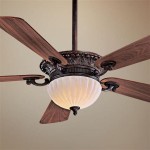Choosing the Right Chandelier Size for a 20-Foot Ceiling
Selecting the appropriate chandelier size for a room with a 20-foot ceiling requires careful consideration of several factors. The chandelier should be visually appealing and proportional to the space, contributing to the overall aesthetic while providing adequate illumination. A chandelier that is too small will appear insignificant and lost in the expansive vertical space, while one that is too large can overwhelm the room and create a sense of imbalance.
The primary goal is to achieve visual harmony, ensuring that the chandelier complements the room's dimensions and style. This involves evaluating the room's width, length, and ceiling height, as well as the placement of furniture and other decorative elements. The intended function of the room and the desired ambiance also play a crucial role in determining the optimal chandelier size. A formal dining room, for example, may benefit from a more elaborate and substantial chandelier than a casual living area.
Several established guidelines and formulas can assist in determining the ideal chandelier dimensions for a 20-foot ceiling. These guidelines take into account the room's overall size and the desired visual impact. It is important to remember that these are general recommendations and may need to be adjusted based on individual preferences and specific room characteristics. Consulting with a lighting professional can provide personalized advice and ensure that the chosen chandelier is perfectly suited to the space.
Understanding the Diameter Formula
One of the most commonly used formulas for determining chandelier diameter involves adding the room's width and length in feet. The resulting sum, expressed in inches, provides a general guideline for the ideal chandelier diameter. For instance, a room that is 15 feet wide and 20 feet long would have a combined dimension of 35 feet. This suggests that a chandelier with a diameter of approximately 35 inches would be a suitable starting point.
This formula provides a valuable starting point, but it is important to consider the context of the room. In spaces with exceptionally high ceilings, such as those reaching 20 feet, the diameter may need to be adjusted upwards to compensate for the increased vertical space. A chandelier that adheres strictly to the diameter formula might appear disproportionately small in a room with such towering ceilings. Adding a few extra inches to the diameter can help ensure that the chandelier commands sufficient visual presence and does not get lost in the vastness of the space.
Furthermore, the style of the chandelier itself can influence the perceived size. A chandelier with a minimalist design and a relatively open structure may appear smaller than a more ornate and densely crafted chandelier with the same diameter. Therefore, it is crucial to consider the visual weight of the chandelier and to adjust the diameter accordingly. If a lighter, more airy design is chosen, increasing the diameter slightly can help maintain visual balance.
It is also important to consider the placement of the chandelier within the room. If the chandelier is to be centered over a large dining table, the diameter should be proportional to the table's size. A chandelier that is too small in relation to the table will appear inadequate, while one that is too large can overwhelm the dining area. The diameter formula should be considered in conjunction with the dimensions of the furniture beneath the chandelier to ensure a harmonious and balanced arrangement.
Finally, personal preference plays a significant role in determining the ideal chandelier diameter. Some individuals may prefer a more understated look, while others may opt for a bolder statement piece. The diameter formula provides a guideline, but the ultimate decision should be based on individual taste and the desired aesthetic impact. It is always recommended to visualize the chandelier in the space, either through mock-ups or digital renderings, before making a final purchase.
Calculating the Appropriate Chandelier Height
Determining the appropriate height of a chandelier for a 20-foot ceiling is as critical as calculating the diameter. The height of the chandelier must be proportional to the ceiling height and the overall dimensions of the room. A chandelier that hangs too low can obstruct views and create a sense of confinement, while one that hangs too high may appear insignificant and fail to provide adequate illumination.
A general rule of thumb for determining chandelier height is to allow 2.5 to 3 inches of chandelier height for each foot of ceiling height. For a 20-foot ceiling, this translates to a chandelier height of approximately 50 to 60 inches (20 feet x 2.5 inches/foot = 50 inches, and 20 feet x 3 inches/foot = 60 inches). This range provides a starting point for selecting a chandelier height that is proportional to the room's vertical space.
However, this guideline should be adjusted based on the specific application and the presence of furniture beneath the chandelier. In dining rooms, the bottom of the chandelier should typically hang 30 to 36 inches above the table. This clearance allows for comfortable conversation and unobstructed views across the table. If the ceiling height is significantly greater than 20 feet, the chandelier may need to hang slightly lower to maintain visual connection with the dining area.
In other living spaces, such as entryways or living rooms, the bottom of the chandelier should generally hang at least 7 feet above the floor to allow for comfortable passage underneath. This clearance is particularly important in areas where people frequently walk or stand. If the chandelier is positioned over a seating area, the height can be adjusted slightly lower, but it should still provide adequate headroom and avoid obstructing views.
The style of the chandelier can also influence the perceived height. A chandelier with a long, slender silhouette may appear taller than a chandelier with a more compact and rounded design, even if they have the same overall height. Therefore, it is essential to consider the visual weight and overall proportions of the chandelier when determining the appropriate height.
The chain or stem length of the chandelier is a critical factor in achieving the desired hanging height. Most chandeliers come with adjustable chains or stems, allowing the installer to customize the height to suit the specific room. It is important to ensure that the chain or stem is long enough to accommodate the desired drop from the ceiling. If the chandelier is too short, it may be necessary to purchase additional chain or stem extensions.
Ultimately, determining the ideal chandelier height involves considering a combination of factors, including ceiling height, furniture placement, and personal preference. The general guidelines provide a useful starting point, but the final decision should be based on a careful assessment of the specific room and the desired visual impact. It is always recommended to consult with a lighting professional to ensure that the chosen chandelier height is safe, functional, and aesthetically pleasing.
Considering Other Room Dimensions and Style
While the diameter and height formulas provide valuable guidance, it is crucial to consider other room dimensions and style when selecting a chandelier for a 20-foot ceiling. The overall proportions of the room, the architectural details, and the existing décor all play a role in determining the optimal chandelier size and style. A chandelier that is perfectly sized according to the formulas may still appear out of place if it clashes with the overall aesthetic of the room.
The shape of the room is an important consideration. In long, narrow rooms, a linear chandelier or a series of smaller chandeliers may be more appropriate than a single, large chandelier. Linear chandeliers can help to visually lengthen the room and create a sense of balance. In square or rectangular rooms, a more traditional chandelier shape, such as a round or oval design, may be a better fit.
The architectural details of the room can also influence the choice of chandelier. In rooms with ornate moldings, decorative ceilings, or other prominent architectural features, a chandelier with a similar level of detail may be appropriate. Conversely, in rooms with a more minimalist or contemporary design, a simpler and more streamlined chandelier may be a better choice. The chandelier should complement the existing architectural elements and enhance the overall aesthetic of the room.
The existing décor, including furniture, artwork, and color schemes, should also be taken into account. The chandelier should coordinate with the overall style of the room and complement the existing color palette. For example, in a room with warm, earthy tones, a chandelier with a bronze or brass finish may be a good choice. In a room with cooler, more contemporary colors, a chandelier with a chrome or nickel finish may be more appropriate.
The intended function of the room is another important consideration. In formal dining rooms, a more elaborate and decorative chandelier may be appropriate. In casual living spaces, a simpler and more functional chandelier may be a better choice. The chandelier should provide adequate illumination for the intended use of the room and create the desired ambiance.
The weight of the chandelier is also an important factor, particularly when installing it on a high ceiling. Ensure that the ceiling structure can safely support the weight of the chandelier. Consult with a qualified electrician or structural engineer to assess the ceiling's load-bearing capacity and to ensure that the chandelier is properly installed.
Ultimately, selecting the right chandelier for a 20-foot ceiling involves a combination of mathematical calculations, aesthetic considerations, and practical concerns. By carefully considering all of these factors, it is possible to choose a chandelier that is both visually stunning and functionally appropriate, enhancing the beauty and ambiance of the room.

Picking The Perfect Chandelier Size For Your Room Hk Interiors

Ace Wrought Iron Chandelier Size And Height Guide

Dining Room Chandelier Size Guide Delmarfans Com

Chandelier Height Guide Choosing The Right Size Lighting For Your Home

Chandelier Height In Living Room A Quick Guide The White Laurel

Chandelier Height In Living Room A Quick Guide The White Laurel

How To Choose The Right Size Lighting Fixture

Epazo Toi Buyer Guide Chandelier Size

What Size Chandelier For 20 Foot Ceiling Countyoffice Org

Armstrong 6 Light 20 Inch Chrome Chandelier 1 Tier Small Ceiling








